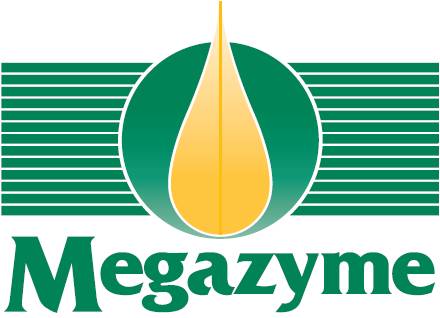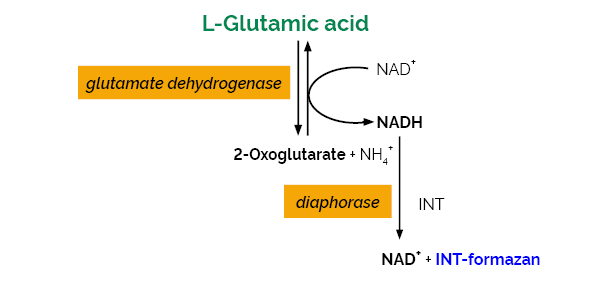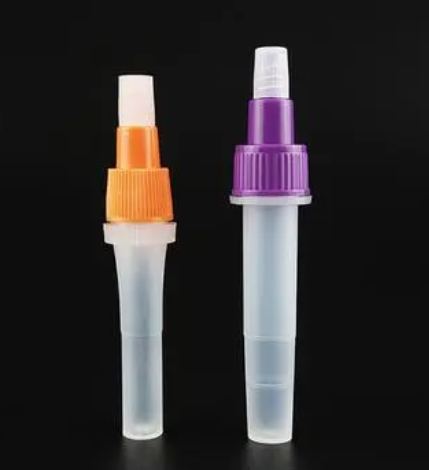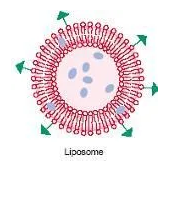L-谷氨酸 检测试剂盒 (MSG),K-GLUT

-
- 产地爱尔兰
- 品牌Megazyme
- 货号K-GLUT
- 规格60 assays (manual) /600 assays (microplate) /700 assays (auto-analyser)
详细描述
MegazymeL-谷氨酸 检测试剂盒 (MSG),K-GLUT
是一种用于食品中L-谷氨酸(MSG)测量和分析的简单,可靠,快速和准确的方法。
内容说明: 如果将所有体积减半,则每个套件的手动测试次数可以加倍。使用MegaQuant TM 波长分光光度计(D-MQWAVE)可以很容易地适应这一点。

| 内容: | 60次检测(手动)/ 600次检测(微孔板)/ 700次检测(自动分析仪) |
| 运输温度: | 常温 |
| 贮存温度: | 短期稳定性:2-8 o C, 长期稳定性:参见各个组件标签 |
| 稳定性: | 在推荐的存储条件下> 2年 |
| 分析物: | L-谷氨酸,味精 |
| 分析形式: | 分光光度计,微孔板,自动分析仪 |
| 检测方法: | 吸光度 |
| 波长(nm): | 492 |
| 信号响应: | 增加 |
| 线性范围: | 每次测定0.4至20微克L-谷氨酸 |
| 检测限: | 0.21毫克/升 |
| 反应时间(分钟): | 〜8分钟 |
| 应用实例: | 水果和蔬菜(例如番茄),加工的水果和蔬菜(例如番茄泥/果汁,番茄酱,酱油),调味品,加工的肉制品(例如提取物,肉汤和香肠),汤,药品和其他材料(例如生物培养物,样本等)。 |
| 方法识别: | 基于此原理的方法已被ISO,GOST和NMKL接受 |
-
极具竞争力的价格(每次测试费用)
-
制备后所有试剂均稳定> 2年
-
谷氨酸脱氢酶溶液在-10 o C 以下稳定
-
没有浪费的心肌黄酶溶液(提供稳定的悬浮液)
-
反应迅速
-
可从我们的网站上获得Mega-Calc ™软件工具,以进行无忧的原始数据处理
-
含标准
-
适用于手动,微孔板和自动分析仪格式
L-谷氨酸[谷氨酸盐/谷氨酸酯/味精/谷氨酸单钠]检测试剂盒 L-Glutamic Acid Assay Kit 货号:K-GLUT Megazyme试剂盒
- L-谷氨酸[谷氨酸盐/谷氨酸酯/味精/谷氨酸单钠]检测试剂盒
-
英文名:L-Glutamic Acid Assay Kit
-
货号:K-GLUT
-
规格:60 assays (manual) /
- Very competitive price (cost per test)
- All reagents stable for > 2 years after preparation
- Glutamate dehydrogenase solution stable at -20°C
- No wasted diaphorase solution (stable suspension supplied)
- Rapid reaction
- Mega-Calc™ software tool is available from our website for hassle-free raw data processing
- Standard included
- Suitable for manual, microplate and auto-analyser formats
- Ensure that you have tested the standard sample that is supplied with the Megazyme test kit.
- Send the results of the kit standard, blank samples and the results obtained for your sample, in the relevant MegaCalc spreadsheet (if available) to Megazyme (cs@megazyme.com). Where available the relevant MegaCalc spreadsheet can be downloaded from where the product appears on the Megazyme website.
- State the kit lot number being used (this is found on the outside of the kit box).
- State which assay format was used (refer to the relevant page in the kit booklet if necessary).
- State exact details of any modifications to the standard procedure that is provided by Megazyme.
- State the sample type and describe the sample preparation steps if applicable.
- The easiest method is to use a microplate reader that has a path-length conversion capability (i.e. the microplater reader can detect the path-length of each well and convert the individual readings to a 1 cm path-length). This will allow values to be calculated using the MegaCalc calculation software which can be found where the product is located on the Megazyme website.
- Perform a standard curve of the analyte on each microplate that contains test samples and calculate the result of the test samples from the calibration curve (concentration of analyte versus absorbance).
- Perform a standard curve of the analyte in both the cuvette format (i.e. with a 1 cm path-length) and the 96-well microplate format and use these results to obtain a mean conversion factor between the cuvette values and the microplate values. Subsequent assays in the microplate format can then be converted from the calculated conversion factor.
市场价: 2332元
分析物意义:常见的天然食品组分,例如在奶酪和番茄中或调味剂中,如味精
Megazyme检测试剂盒优点:提供的硫辛酰胺脱氢酶是稳定的悬浮液而不是可溶性粉末,从而减少了酶的浪费
The L-Glutamic Acid test kit is a simple, reliable, rapid and accurate method for the measurement and analysis of L-glutamate (MSG) in foodstuffs.
Suitable for manual, auto-analyser and microplate formats.
Colourimetric method for the determination of L-Glutamic Acid
(Monosodium Glutamate; MSG) in foodstuffs and other materials
Principle:
(beef liver glutamate dehydrogenase)
(1) L-Glutamic acid + NAD+ + H2O ↔ 2-oxoglutarate + NADH + NH4+
(diaphorase)
(2) INT + NADH + H+ → NAD+ + INT-formazan
Kit size: 60 assays (manual) / 600 (microplate)
/ 700 (auto-analyser)
Method: Spectrophotometric at 492 nm
Reaction time: ~ 9 min
Detection limit: 0.21 mg/L
Application examples:
Fruit and vegetables (e.g. tomato), processed fruit and vegetables
(e.g. tomato puree / juice, ketchup, soy sauce), condiments, processed
meat products (e.g. extracts, bouillon and sausages), soup, pharmaceuticals
and other materials (e.g. biological cultures, samples, etc.)
Method recognition:
Methods based on this principle have been accepted by ISO, GOST
and NMKL
Advantages
Q1. What level of cysteine in test samples will affect the results obtained from K-GLUT?
Samples that contain cysteine levels higher than 1 mM will not generate results within the required specification for the K-GLUT assay.
Q2. Should the pH of the sample be adjusted even for samples in acidic media?
The pH of the assay solution after the sample is added should be the same as that of the assay buffer that is supplied with the kit.
Low sample volumes (e.g. 0.1 mL) are not likely to affect the pH of the assay solution and therefore may not require pH adjustment.
Samples above 0.1 mL are more likely to affect the pH of the assay solution and therefore the pH of these samples should be adjusted as described in the data booklet, prior to addition to the assay.
Q3. There is an issue with the performance of the kit; the results are not as expected.
If you suspect that the Megazyme test kit is not performing as expected such that expected results are not obtained please do the following:
Q4. How can I work out how much sample to extract and what dilution of my sample should be used in the kit assay?
Where the amount of analyte in a liquid sample is unknown, it is recommended that a range of sample dilutions are prepared with the aim of obtaining an absorbance change in the assay that is within the linear range.
Where solid samples are analysed, the weight of sample per volume of water used for sample extraction/preparation can be altered to suit, as can the dilution of the extracted sample prior to the addition of the assay, as per liquid samples.
Q5. I have some doubts about the appearance/quality of a kit component what should be done?
If there are any concerns with any kit components, the first thing to do is to test the standard sample (control sample) that is supplied with the kit and ensure that the expected value (within the accepted variation) is obtained before testing any precious samples. This must be done using the procedure provided in the kit booklet without any modifications to the procedure. If there are still doubts about the results using the standard sample in the kit then send example results in the MegaCalc spread sheet to your product supplier (Megazyme or your local Megazyme distributor).
Q6. Can the sensitivity of the kit assay be increased?
For samples with low concentrations of analyte the sample volume used in the kit assay can be increased to increase sensitivity. When doing this the water volume is adjusted to retain the same final assay volume. This is critical for the manual assay format because the assay volume and sample volume are used in the calculation of results.
Q7. How much sample should be used for the clarification/extraction of my sample?
The volume/weight of sample and total volume of the extract can be modified to suit the sample. This will ultimately be dictated by the amount of analyte of interest in the sample and may require empirical determination. For low levels of analyte the sample:extract volume ratio can be increased (i.e. increase the sample and/or decrease the total extraction volume).
Alternatively, for samples with low concentrations of analyte, a larger sample volume can be added to the kit assay. When altering the sample volume adjust the distilled water volume added to the assay accordingly so that the total assay volume is not altered.
Q8. Can the test kit be used to measure biological fluids and what sample preparation method should be used?
The kit assay may work for biological fluids assuming that inositol is present above the limit of detection for the kit after any sample preparation (if required). Centrifugation of the samples and use of the supernatant directly in the kit assay (with appropriate dilution in distilled water) may be sufficient. However, if required a more stringent sample preparation method may be required and examples are provided at the following link:http://www.megazyme.com/docs/analytical-applications-downloads/biological_samples_111109.pdf?sfvrsn=2
The test kit has not been tested using biological fluids as samples because it is not marketed or registered as a medical device. This will therefore require your own validation.
Q9. Can the manual assay format be scaled down to a 96-well microplate format?
The majority of the Megazyme test kits are developed to work in cuvettes using the manual assay format, however the assay can be converted for use in a 96-well microplate format. To do this the assay volumes for the manual cuvette format are reduced by 10-fold. The calculation of results for the manual assay format uses a 1 cm path-length, however the path-length in the microplate is not 1 cm and therefore the MegaCalc spreadsheet or the calculation provided in the kit booklet for the manual format cannot be used for the micropalate format unless the microplate reader being used can.
There a 3 main methods for calculation of results using the microplate format:
Q10. When using this kit for quantitative analysis what level of accuracy and repeatability can be expected?
The test kit is extremely accurate – at Megazyme the quality control criteria for accuracy and repeatability is to be within 2% of the expected value using pure analytes.
However, the level of accuracy is obviously analyst and sample dependent.
Q11. Absorbance values of my sample reactions continue to increase slowly after the reaction should be complete. Is there an explanation for this?
Some samples can react with the INT in the assay and cause a non-enzymatic creep reaction.
The 3rd worksheet in the MegaCalc is used to account for any creep reaction in your results.
Q12. Must the minimum absorbance change for a sample always be at least 0.1?
No. The 0.1 change of absorbance is only a recommendation. The lowest acceptable change in absorbance can is dictated by the analyst and equipment (i.e. pipettes and spectrophotometer) and therefore can be can be determined by the user. With accurate pipetting, absorbance changes as low as 0.02 can be used accurately.
If a change in absorbance above 0.1 is required but cannot be achieved due to low concentrations of analyte in a sample, this can be overcome by using a larger sample volume in the assay to increase the absorbance change and thereby increase sensitivity of the assay. When doing this the increased volume of the sample should be subtracted from the distilled water volume that is added to the assay so that the total assay volume is unaltered. The increase sample volume should also be accounted for when calculating final results.
Q13. Can the sensitivity of the kit assay be increased?
Yes. Samples with the lower concentrations of analyte will generate a lower absorbance change. For samples with low concentrations of analyte, a larger sample volume can be used in the assay to increase the absorbance change and thereby increase sensitivity of the assay. When doing this the increased volume of the sample should be subtracted from the distilled water volume that is added to the assay so that the total assay volume is unaltered. The increase sample volume should also be accounted for when calculating final results.
PGA-PEG-PGA/PGA10K-PEG5K-PGA10K 聚谷氨酸-聚乙二醇-聚谷氨酸

|
|
|
|
|
|
|
|
|
|
|
|
|
|
|
|
|
|
|
|
|
|
|
|
|
|
叶酸受体为靶向的阳离子脂质体的应用以及相关产品
叶酸受体为靶向的阳离子脂质体
叶酸是一种水溶性维生素,分子式是C19H19N7O6。因绿叶中含量十分丰富而得名,又名喋酰谷氨酸。
在自然界中有几种存在形式,其母体化合物是由喋啶、对氨基苯甲酸和谷氨酸3种成分结合而成。
叶酸含有1个或多个谷氨酰基,天然存在的叶酸大都是多谷氨酸形式。
叶酸的生物活性形式为四氢叶酸。叶酸为黄色结晶,微溶于水,但其钠盐极易溶于水。不溶于乙醇。
在酸性溶液中易破坏,对热也不稳定,在室温中很易损失,见光极易被破坏。
脂质体(liposome)是一种人工膜。在水中磷脂分子亲水头部插入水中,脂质体疏水尾部伸向空气,搅动后形成双层脂分子的球形脂质体,直径25~1000nm不等。脂质体可用于转基因,或制备的药物,利用脂质体可以和细胞膜融合的特点,将药物送入细胞内部 生物学定义:当两性分子如磷脂和鞘脂分散于水相时,分子的疏水尾部倾向于聚集在一起,避开水相,而亲水头部暴露在水相,形成具有双分子层结构的的封闭囊泡,称为脂质体。

脂质体(Liposomes)是由卵磷脂和神经酰胺等制得的脂质体(空心),具有的双分子层结构与皮肤细胞膜结构相同
相关产品:
甘露糖化胆固醇配体修饰甘草次酸脂质体
肺靶向阿奇霉素阳离子脂质体
TiO2@Fe3O4纳米材料的盐酸阿霉素磁性热敏脂质体
蒿醚林酸-胆碱衍生物的脂质体
氟比洛芬脂质体/聚己内酯微球
脂质体包裹介孔硅纳米粒
黄芩素纳米靶向脂质体
咪喹莫特脂质体化合物
iRGD靶向载尿激酶脂质体-微泡(iRGD-LMC)
CY3标记脂质体包载阿霉素/博来霉素
伊立替康/JQ1的主动靶向脂质体APCJ
壳聚糖包覆姜黄素脂质体
HAS-DNR-TET人血清白蛋白修饰的柔红霉素/粉防己碱脂质体材料
SA-DNR-TET链霉亲和素修饰的柔红霉素/粉防己碱脂质体
WGA-DNR-TET麦胚凝集素修饰的柔红霉素/粉防己碱脂质体
供应商:上海金畔生物科技有限公司
产地:上海
用途:药物载体
说明:可定制
聚谷氨酸聚乙二醇聚谷氨酸 PGA-b-PEG-b-PGA
| 产品名称 | 聚谷氨酸聚乙二醇聚谷氨酸 PGA-b-PEG-b-PGA |
|---|---|
| 中文名称 | 聚谷氨酸聚乙二醇聚谷氨酸 |
| 英文名称 | PGA-b-PEG-b-PGA Poly(glutamic acid)-PEG-poly(glutamic acid) |
| 分子量 | 1000 |
| 溶解度 | 水,DMSO |
| 存储条件 | -20°冷冻,干燥保存 |
| 保存时间 | 一年 |
| 其它信息 | 特殊分子量请咨询客服 |
| 其它分子量 | 2000 3400 5000 |
聚谷氨酸聚乙二醇聚谷氨酸 PGA-b-PEG-b-PGA
| 产品名称 | 聚谷氨酸聚乙二醇聚谷氨酸 PGA-b-PEG-b-PGA |
|---|---|
| 中文名称 | 聚谷氨酸聚乙二醇聚谷氨酸 |
| 英文名称 | PGA-b-PEG-b-PGA Poly(glutamic acid)-PEG-poly(glutamic acid) |
| 分子量 | 2000 |
| 溶解度 | 水,DMSO |
| 存储条件 | -20°冷冻,干燥保存 |
| 保存时间 | 一年 |
| 其它信息 | 特殊分子量请咨询客服 |
| 其它分子量 | 1000 5000 |
聚谷氨酸聚乙二醇聚谷氨酸 PGA-b-PEG-b-PGA
| 产品名称 | 聚谷氨酸聚乙二醇聚谷氨酸 PGA-b-PEG-b-PGA |
|---|---|
| 中文名称 | 聚谷氨酸聚乙二醇聚谷氨酸 |
| 英文名称 | PGA-b-PEG-b-PGA Poly(glutamic acid)-PEG-poly(glutamic acid) |
| 分子量 | 3400 |
| 溶解度 | 水,DMSO |
| 存储条件 | -20°冷冻,干燥保存 |
| 保存时间 | 一年 |
| 其它信息 | 特殊分子量请咨询客服 |
| 其它分子量 | 1000 2000 5000 |
聚谷氨酸聚乙二醇聚谷氨酸 PGA-b-PEG-b-PGA
| 产品名称 | 聚谷氨酸聚乙二醇聚谷氨酸 PGA-b-PEG-b-PGA |
|---|---|
| 中文名称 | 聚谷氨酸聚乙二醇聚谷氨酸 |
| 英文名称 | PGA-b-PEG-b-PGA Poly(glutamic acid)-PEG-poly(glutamic acid) |
| 分子量 | 5000 |
| 溶解度 | 水,DMSO |
| 存储条件 | -20°冷冻,干燥保存 |
| 保存时间 | 一年 |
| 其它信息 | 特殊分子量请咨询客服 |
| 其它分子量 | 1000 2000 3400 |
聚谷氨酸交联聚乳酸 PLA-b-PGA
聚乳酸交联聚谷氨酸(PLA-b-PGA)已广泛应用于靶向药物的研究以及蛋白质载体和配体的交联,可制成载药微球、微胶囊、囊泡和胶束, 可用于实现药物的缓释和控释,也可作为亲水性好的组织工程支架材料。
| 产品名称 | 聚谷氨酸交联聚乳酸 PLA-b-PGA |
|---|---|
| 中文名称 | 聚谷氨酸交联聚乳酸 |
| 英文名称 | PLA-b-PGA |
| 分子量 | 可根据需要定制聚乳酸及聚谷氨酸分子量 |
| 溶解度 | 溶于三氯甲烷/二氯甲烷等部分有机溶剂 |
| 存储条件 | -20°冷冻,干燥保存 |
| 保存时间 | 一年 |
聚乳酸交联聚谷氨酸 PGA-b-PLA
| 产品名称 | 聚乳酸交联聚谷氨酸 PGA-b-PLA |
|---|---|
| 中文名称 | 聚乳酸交联聚谷氨酸 |
| 英文名称 | PGA-b-PLA |
| 分子量 | 可根据需要定制聚乳酸及聚谷氨酸分子量 |
| 溶解度 | 有机溶剂 |
| 存储条件 | -20°冷冻,干燥保存 |
| 保存时间 | 一年 |
